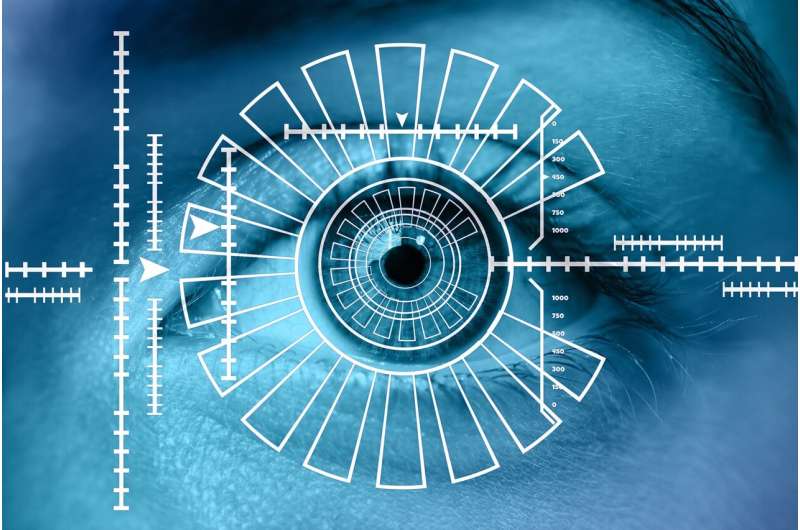This article has been reviewed according to Science X's editorial process and policies. Editors have highlighted the following attributes while ensuring the content's credibility:
fact-checked
peer-reviewed publication
trusted source
proofread
AI screens for autism in the blink of an eye

With a single flash of light to the eye, artificial intelligence (AI) could deliver a faster and more accurate way to diagnose autism spectrum disorder (ASD) in children, according to a new study from the University of South Australia and Flinders University now published in Research in Autism Spectrum Disorders.
Using an electroretinogram (ERG)—a diagnostic test that measures the electrical activity of the retina in response to a light stimulus—researchers have deployed AI to identify specific features to classify ASD.
Measuring retinal responses of 217 children aged 5–16 years (71 with diagnosed ASD and 146 children without an ASD diagnosis), researchers found that the retina generated a different retinal response in the children with ASD as compared to those who were neuro typical.
The team also found that the strongest biomarker was achieved from a single bright flash of light to the right eye, with AI processing significantly reducing the test time. The study found that higher frequency components of the retinal signal were reduced in ASD.
Conducted with University of Connecticut and University College London, the test could be further evaluated to see if these results could be used to screen for ASD among children aged 5 –16 years with a high level of accuracy.
ASD is a neurodevelopmental condition characterized by difficulties in reciprocal social interactions, communication, and repetitive/restrictive behaviors.
In Australia 1 in 70 people is on the autism spectrum, which is around 353,880 people. It is four times more common in boys than girls. Globally, rates of autism vary, with the World Health Organization estimating the prevalence as 1 in every 100 children.
UniSA researcher, Dr. Fernando Marmolejo-Ramos says that the test could provide clinicians with an improved method for ASD diagnoses, fast-tracking much needed support for thousands of children on the spectrum.
"Early interventions and appropriate support can help children with ASD improve their quality of life, but right now, there is no simple 'test' for ASD which means that individuals often require lengthy psychological assessments and reports to get a diagnosis," Dr. Marmolejo-Ramos says.
"This test is much quicker. By using the RETeval electroretinogram testing unit, we can collect data, and complete a screening for autism, all within as little as 10 minutes.
"This is a massive step because it alleviates time, stress and money for parents and their children.
"Importantly, the test is non-invasive and tolerated well by children, which makes the process so much easier for all involved."
Because the eye is connected to the brain, looking into the eye to understand the brain lets us learn more about how the brain develops in people with ASD, says Flinders University researcher and project lead, Dr. Paul Constable.
"It's very exciting to begin to look at new ways of using the electroretinogram with signal analysis and machine learning to help classify ASD with greater accuracy," Dr. Constable says.
"We still need to look at younger children and also those with other conditions such as attention deficit hyperactivity disorder to see how specific this test might be, but this is an important first step."
Co-researcher, Dr. Hugo Posada-Quintero, Assistant Professor in the Department of Biomedical Engineering at the University of Connecticut, says the next steps will be to extend the research to look at other cohorts and diagnostic categories.
"Our study demonstrates the promising potential of analyzing retinal responses using advanced signal processing and machine learning techniques to aid in the identification of neurodevelopmental conditions like autism spectrum disorder," Dr. Posada-Quintero says.
"With further research and technological development, these analytic methods could be developed into practical tools to help clinicians accurately and efficiently screen for and diagnose ASD and related disorders."
More information: Hugo F. Posada-Quintero et al, Autism spectrum disorder detection using variable frequency complex demodulation of the electroretinogram, Research in Autism Spectrum Disorders (2023). DOI: 10.1016/j.rasd.2023.102258





















